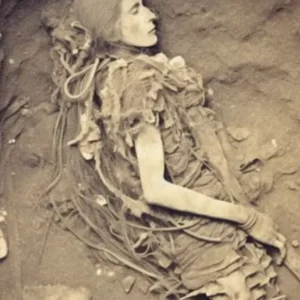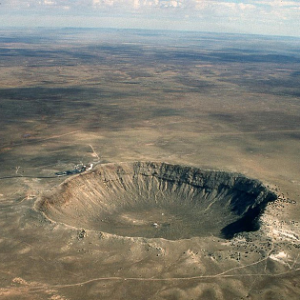In 2018, a photo showing the skeleton of a creature with a human upper body and a mermaid lower body caused quite a stir on social media. The photo was shared by many foreign groups with the content stating that this was the skeleton of a real mermaid.
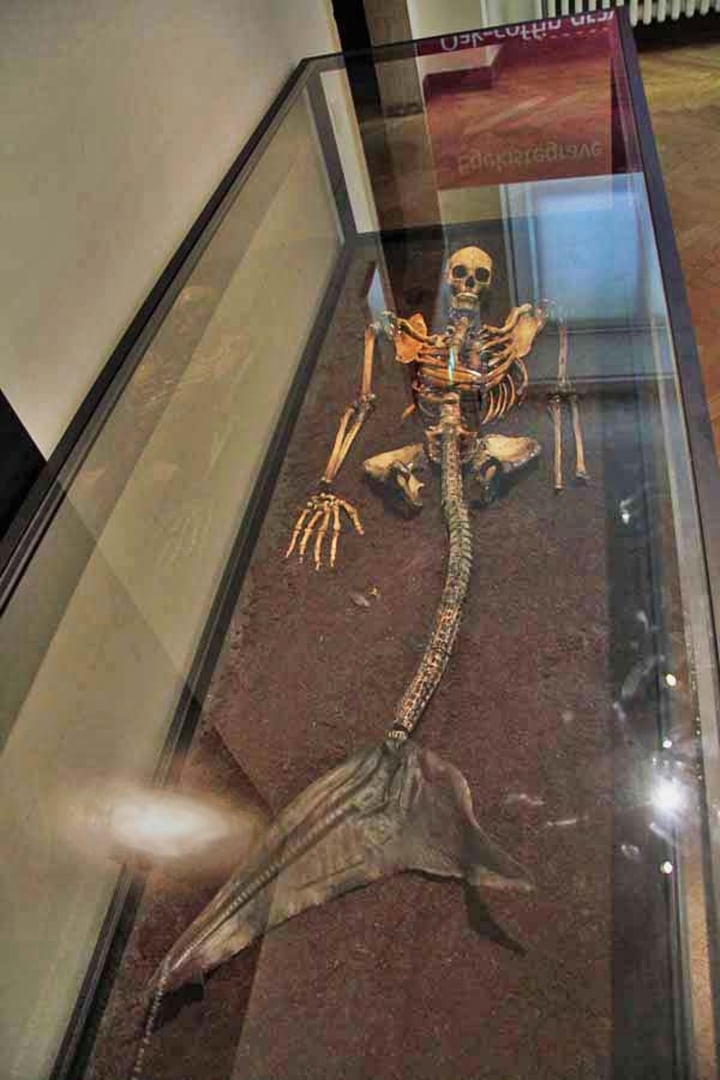
According to the information, this mermaid skeleton was found by a farmer in Haraldskaer, Denmark while working in the fields. And according to a more detailed description, it was displayed at the National Museum of Denmark in Copenhagen for the first time in 2012.
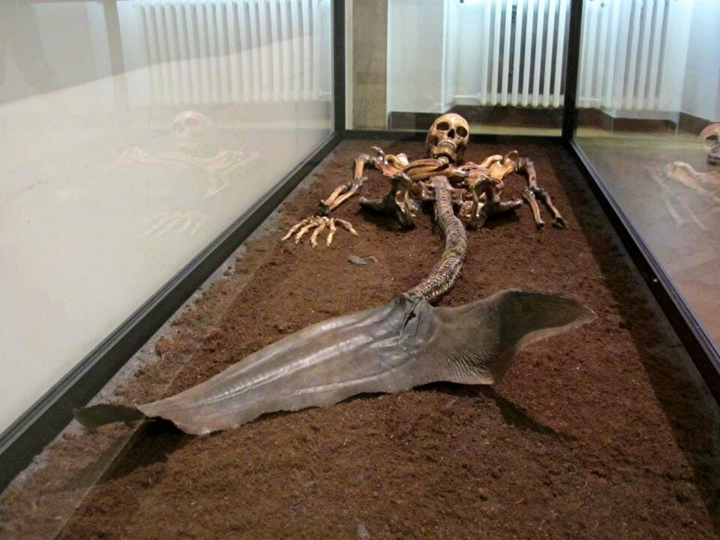
The “Haraldskaer Mermaid” is described as a young woman of about 18 years old, measuring about 1m80 from head to tail. She has long, thick hair, and her skull shows that she belongs to the Asian branch, but no Asian “Mermaids” have been discovered in Europe before. Her species is said to belong to the genus Hydronymphus Pesci – thought to have become extinct in the late 17th century.
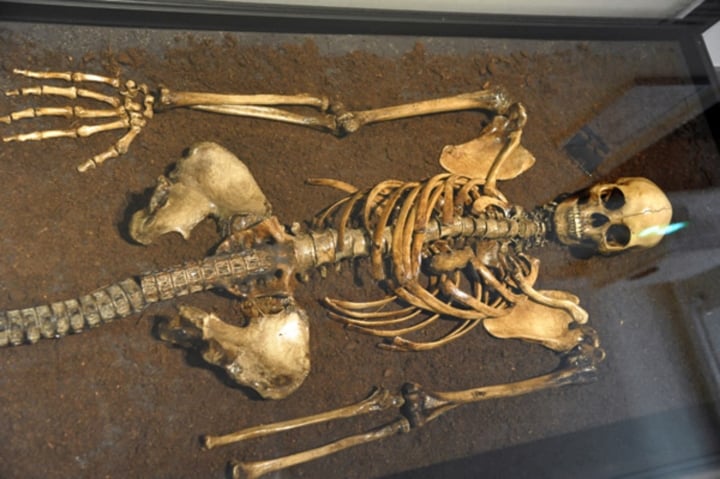
The skeleton was almost intact except for the missing left hand, with all the teeth still preserved, the fangs were exceptionally long and sharp, with no signs of wear. Alongside them they discovered a purse, which contained shark teeth, a snake tail, a clam shell, and a flower (like any item a mermaid would keep in her purse).
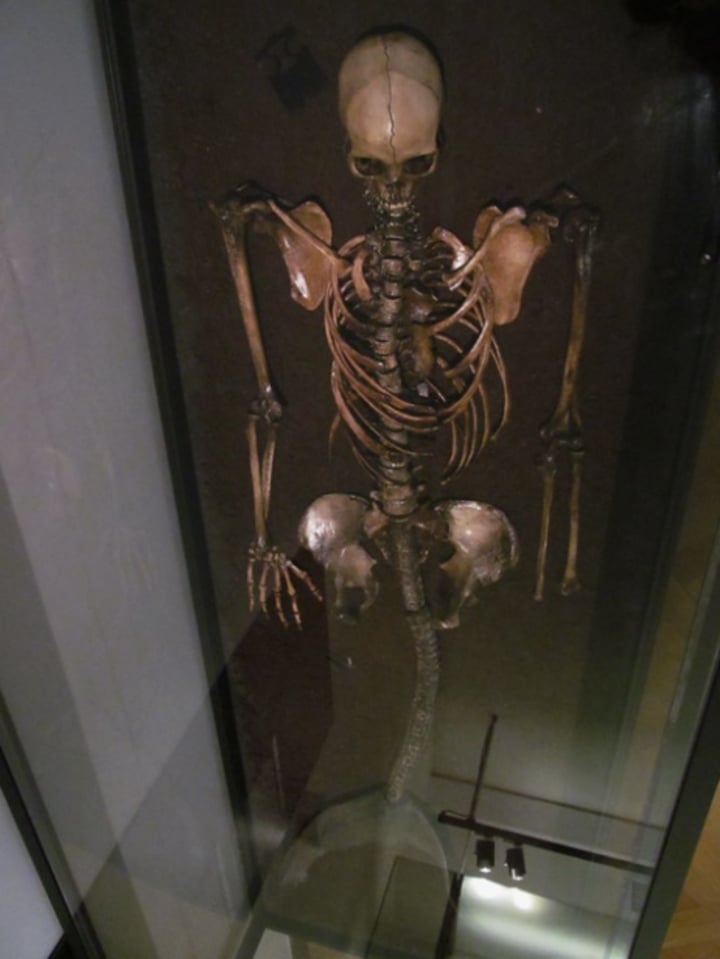
All in all, it’s all fascinating information, but the truth is that it’s all fiction. In fact, as Danish zoologist and cryptozoologist Lars Thomas explains, the Haraldskaer mermaid skeleton is a complete creation complete with a shark-inspired tail.
The piece was created by Mille Rude, a Danish artist, for a special exhibition held at the National Museum of Denmark, Copenhagen in 2012.
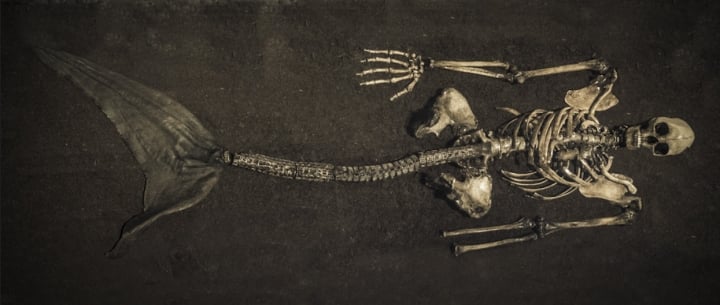
Rude was inspired by the very famous real-life discovery in 1835 of the “Haraldskaer Woman” – the naturally preserved body of a young woman found in Haraldskaer Bog, and dated to around 490 BC (pre-Roman Iron Age).
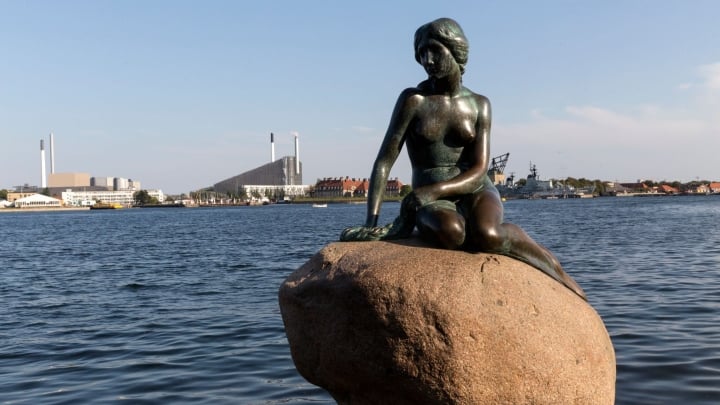
“The Little Mermaid” by Danish writer Hans Christian Andersen is the most famous story about mermaids in the West.
Therefore, it is not difficult to understand why the image of the mermaid has become a symbol in this Nordic country. The mermaid in Andersen’s work has even been made into a bas-relief in the capital Copenhagen, Denmark, and is now a famous tourist attraction in the world.


